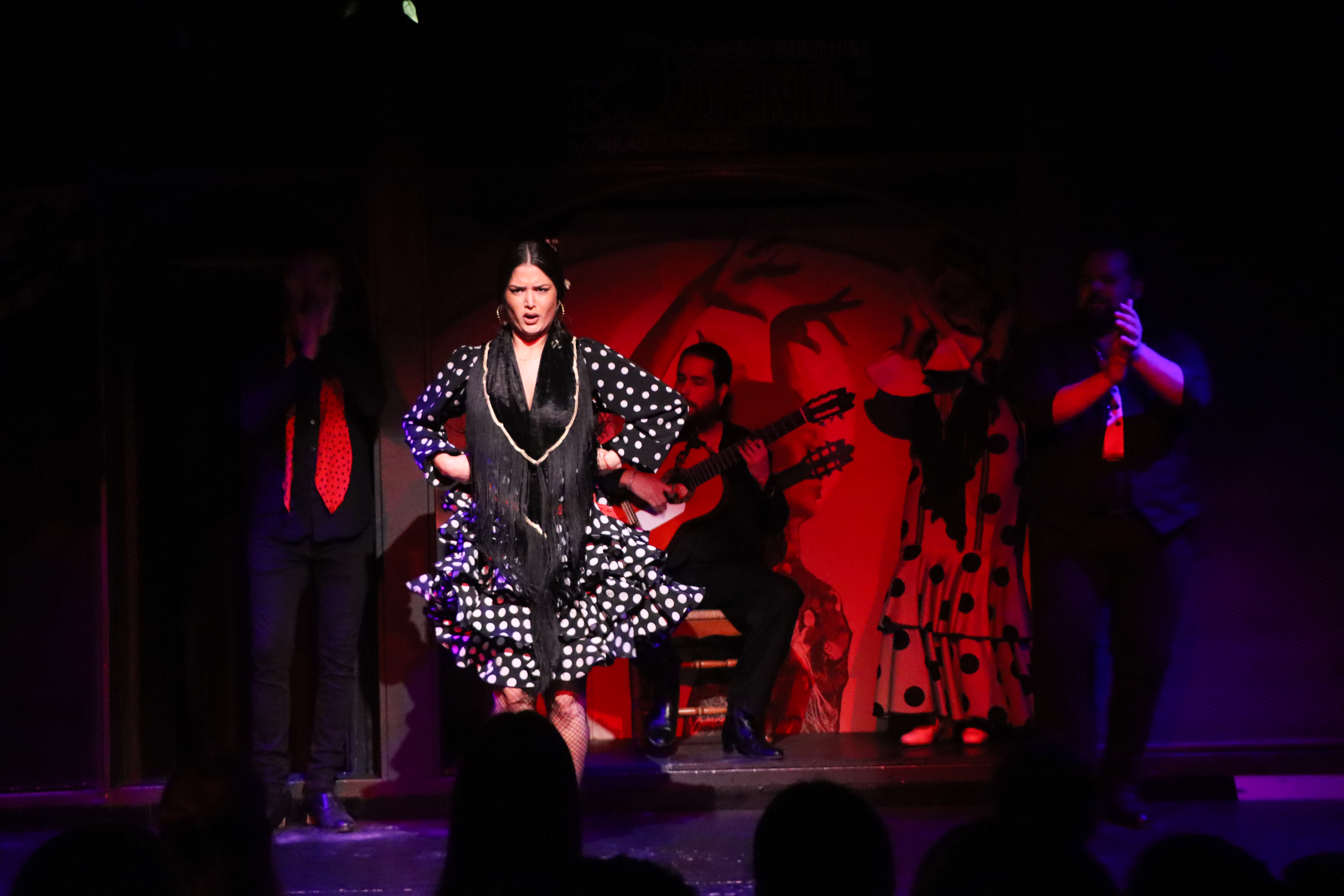Discover the Heart of Barcelona: La Rambla and el Duende by Tablao Cordobes

Life on Barcelona's Ramblas still pulsates as if the collective memory keeps the pulse of history.
Life on Barcelona's Ramblas pulsates with a vibrant history, where the collective memory breathes life into every corner. La Rambla, ever-changing and endless, has witnessed the passionate endeavors of a family of flamenco artists at the legendary Tablao Flamenco Cordobés.

This iconic venue is internationally recognized as one of the most significant spaces for pure flamenco in the world. Its historical prestige shines through in its new brand: "El Duende by Tablao Cordobés", located at Ramblas 33 in Barcelona. The magical shows at El Duende allow you to enjoy authentic flamenco performed by the finest talents in Barcelona and beyond, including emerging stars.
What is La Rambla?
La Rambla derives its name from the old riverbed that once channeled rainwater from the Collserola mountains to the sea. Over the centuries, Barcelona adapted this waterway, and after the construction of the old city wall in the 15th century, the channel was diverted. This led to the development of convents and new buildings, transforming La Rambla into a public space by the 18th century, evolving into a civic promenade lined with trees and residential buildings.
Strolling along La Rambla immerses you in its magic, with unique theaters, palaces, and vibrant floral kiosks. The Boqueria market, inaugurated in 1840, and the Liceu Theatre, opened in October 1999, add to the area's allure. Plaza Real, once home to the Capuchin convent of Santa Madrona, showcases Antonio Gaudí’s iconic lampposts and the stunning fountain of the Three Graces, built in 1876.

Over the years, the city has consolidated its presence with beautiful residential buildings and local stores. Strolling along La Ramblas is to let oneself be enveloped by the magic of its people, the unique theaters, palaces, floral kiosks, the Boqueria market inaugurated in 1840, the Liceu theatre inaugurated in October 1999, and the bustling Plaza Real. In it, there was the Capuchin convent of Santa Madrona, demolished in 1835 and it was Antonio Gaudí himself who designed the lampposts of the square where the fountain of the three graces, built in 1876, also stands out.
Cultural Highlights
The area surrounding La Rambla is rich with cultural landmarks. In the theatre square (transition between La Rambla de Capuchinos and Santa Monica), artists capture the essence of humanity and landscapes through sketches and paintings.
The Gran Teatro del Liceo, the oldest theater in Spain, stands proudly alongside the Oriente Hotel, a remnant of the promenade's former grandeur. La Rambla also houses the Poliorama Theater, inaugurated in 1894, and the nearby church of Bethlehem, a Baroque gem built in 1553, also enhance the cultural fabric of La Rambla.
Continuing along La Rambla, known for its flower market, you’ll find the Virreina Palace, home to the city's giants—the oldest documented giants in Europe.
As you explore further, you'll discover two remarkable buildings that grace this vibrant thoroughfare: the Church of Bethlehem, a rare example of Baroque architecture in Barcelona, built in 1553, and the Palace of the Marquis of Comillas, also known as Moja Palace, constructed in 1774 in elegant neoclassical style.

The beginnings of Tablao Cordobés in the flamenco shows on La Rambla in Barcelona
As we highlighted earlier, the historic Tablao Flamenco Cordobés is situated at La Rambla 35, and now, just steps away, you can find our new venue: El Duende by Tablao Cordobés at La Rambla 33.
So, let’s embark on this journey of discovery... As they say, it’s the most beautiful and historic promenade in the world, and now it's your turn to experience its wonders.
